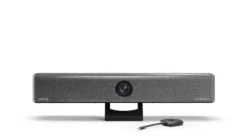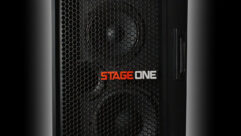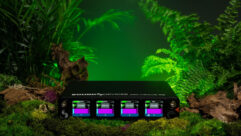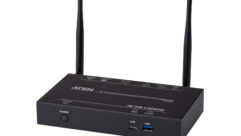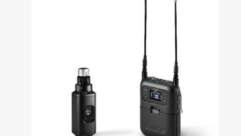
Toronto Deploys Wireless Signage on Commuter Trains
Sep 9, 2008 12:00 PM,
By John W. DeWitt

United Mobile Broadcasting Corporation (UMBC) is deploying a cellular-based digital-signage network powered by Omnivex software on metro Toronto’s GO commuter trains, which serve more than 170,000 passengers daily.
Digital signage has become a ubiquitous tool for informing and entertaining the traveling public—particularly via fixed installations in airports, bus terminals, and train stations. “We face unique networking challenges when deploying on moving trains,” says Jonathan Rhee, vice president of operations for United Mobile Broadcasting Corporation (UMBC). Working in concert with signage software maker Omnivex, UMBC is deploying a cellular-based signage network on the metro Toronto area’s GO Transit commuter trains—more than 400 bi-level passenger railcars serving more than 170,000 passengers daily.
“Omnivex initially started working with UMBC in November 2007, but the installation did not really start to take shape until April of 2008,” says Jeff Collard, president of Omnivex. “Omnivex has been very active in transportation with airports, ferries, buses, and terminals, but this is the first system that we have installed on moving trains.”
The GO Transit signage network represents one of the first mobile broadcast installations—with realtime data updates—on commuter trains and subways in North America. Each bi-level car is being fitted with eight 15in. LCD monitors (four per level) to display news, weather, sports and business content, movie previews, videos, and advertising. Audio is available via FM radio stations.
“From a software perspective, this is pretty straightforward, but the application provides some major challenges for hardware,” Collard says. “A major hurdle in this installation was network connectivity. Cellular communications was the best way to go but the network had to accommodate limitations in bandwidth, transfer speeds, and switching between towers as the train travels at high speed. The player must be able to operate in a disconnected state for periods of time without any loss of performance to the viewer.”
“Omnivex was able to address these challenges by interfacing with the EVDO cellular network that the digital signage is managed through,” Rhee says. Originally, UMBC considered using an inhouse software solution to run the On-Train TV (OTTV) network. Ultimately, the Omnivex software platform was selected for factors including its flexibility when working with new communications technologies (such as wireless EDGE), cost-saving ability while maintaining a network, and the ease of collecting proof-of-play data.
“Members of our technical services team went on site to work with UMBC engineers to resolve issues and optimize performance, and the two teams came up with a pretty impressive solution using standard products,” Collard says. “One interesting aspect in this project is dealing with tight constraints on bandwidth speeds and volume. Large video files can be delivered when a train is at the station when constraints are lower and ongoing connectivity is assured. Realtime information is updated on the fly with much lower bandwidth requirements. If a connection is interrupted when a train enters a tunnel, the system continues to play with no loss and resumes on the other end. Having the ability to intelligently partition the data delivery to optimize performance is a big advantage and cost saving to UMBC.”
Toronto Deploys Wireless Signage on Commuter Trains
Sep 9, 2008 12:00 PM,
By John W. DeWitt

The ability to provide live data and frequently updated content was considered crucial to keeping the attention of GO passengers, the majority of whom are affluent professionals with an average train ride of 35 minutes twice per day, generating more than a million impressions per week.
“Content is most useful and captivating when it is relevant to the viewer,” Collard says. “Building live data into your content reduces operating costs, provides relevance to your audience, and keeps content from becoming stale. Improving the viewer experience was a major consideration for this project.”
The GO train deployment is one of a number of Omnivex transportation-related applications that combine signage with leading-edge mobile technology to ensure live or otherwise relevant content for viewers.
“We have customers using GPS to track vehicle position and using the present location to determine the appropriate content within a bus or taxi. If a vehicle is delayed in traffic or deviates from its route, the message on the screen relates to their location at that time,” Collard says. “On Canada’s west coast, British Columbia Ferries use Omnivex software to communicate to their customers. Should a ferry be delayed getting to dock due to weather conditions, the ship can update arrival time at the terminal so customers are not left wondering what is happening.”
For more information, visit www.omnivex.com and www.umbc.tv.


